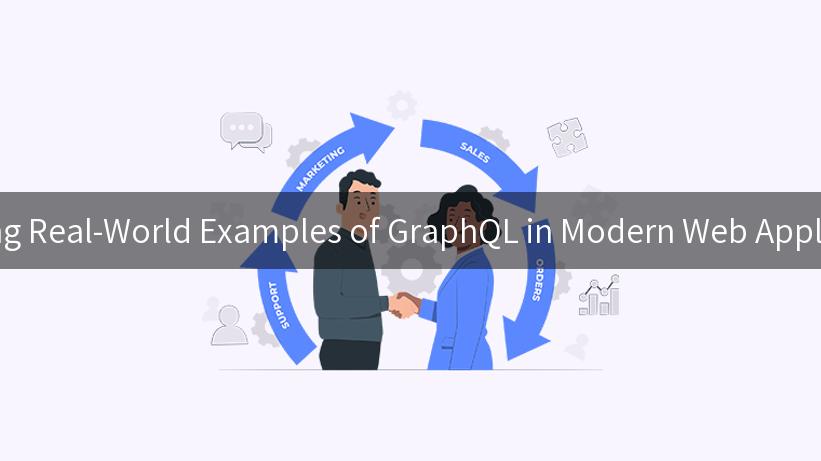
GraphQL has revolutionized the way developers design and interact with APIs, offering a flexible and powerful alternative to traditional RESTful architectures. As web applications grow more complex, the demand for efficient data handling has made GraphQL an attractive choice for developers. In this article, we will explore real-world examples of GraphQL in modern web applications, delving into how organizations are leveraging this technology to streamline their data operations. We’ll also touch on related technologies like AI Gateway, nginx, and API Exception Alerts to see how they complement GraphQL implementations.
Understanding GraphQL: A Brief Overview
GraphQL, developed by Facebook in 2012, is a query language for your API, and a runtime for executing those queries by using a type system you define for your data. Unlike REST, which often requires multiple endpoints to retrieve related data, GraphQL allows clients to request exactly the data they need in a single query. This capability reduces the number of network requests and minimizes over-fetching and under-fetching issues, which are common in RESTful services.
Key Features of GraphQL
- Declarative Data Fetching: Clients specify what data they need.
- Single Endpoint: All queries pass through a single endpoint, simplifying API management.
- Strongly Typed Schema: GraphQL APIs are backed by a type system, ensuring data consistency.
- Introspection: Clients can query the API to understand what operations are available.
Real-World Examples of GraphQL
1. GitHub’s API
GitHub has made significant strides with its GraphQL API, which provides an efficient and flexible way to interact with GitHub’s vast ecosystem of repositories, issues, and pull requests. Developers can retrieve comprehensive data in a single request, allowing for more dynamic and responsive applications. By using GraphQL, GitHub has reduced the complexity associated with its API and improved the developer experience.
2. Shopify
Shopify utilizes GraphQL to power its storefront API, enabling developers to build custom e-commerce experiences. GraphQL’s flexibility allows developers to retrieve only the data they need, optimizing performance and reducing the load on Shopify’s servers. This approach is particularly beneficial for mobile applications where bandwidth and latency are critical concerns.
3. Pinterest
Pinterest has adopted GraphQL to streamline its API interactions and improve the performance of its mobile applications. With GraphQL, Pinterest can deliver a seamless user experience by efficiently loading images and related metadata, reducing the time it takes to render content on users’ screens.
Integrating GraphQL with AI Gateway
AI Gateway is an innovative solution that can enhance GraphQL implementations by providing intelligent routing and data processing capabilities. By leveraging machine learning algorithms, AI Gateway can optimize query performance, predict usage patterns, and offer personalized responses based on user behavior. This integration can significantly improve the scalability and efficiency of GraphQL APIs, especially in high-traffic environments.
Key Benefits of AI Gateway
- Intelligent Query Optimization: AI Gateway can analyze query patterns and optimize data retrieval strategies.
- Dynamic Load Balancing: By predicting traffic spikes, AI Gateway can dynamically allocate resources.
- Enhanced Security: AI Gateway can detect and block malicious queries, ensuring the integrity of the GraphQL API.
Using Nginx as an API Gateway
Nginx is a powerful web server that can also function as an API gateway, providing a robust environment to manage GraphQL APIs. By using Nginx, developers can implement features such as load balancing, caching, and request throttling, which are essential for maintaining high availability and performance in modern web applications.
Configuring Nginx for GraphQL
To set up Nginx as an API gateway for a GraphQL server, you can use the following configuration:
http {
server {
listen 80;
server_name graphql.example.com;
location /graphql {
proxy_pass http://localhost:4000;
proxy_set_header Host $host;
proxy_set_header X-Real-IP $remote_addr;
proxy_set_header X-Forwarded-For $proxy_add_x_forwarded_for;
proxy_set_header X-Forwarded-Proto $scheme;
}
}
}
This configuration routes incoming GraphQL requests to a backend server running on port 4000, handling HTTP headers to preserve client information.
{
APIPark is a high-performance AI gateway that allows you to securely access the most comprehensive LLM APIs globally on the APIPark platform, including OpenAI, Anthropic, Mistral, Llama2, Google Gemini, and more.Try APIPark now! 👇👇👇
}
API Exception Alerts
In any API-driven application, monitoring and handling exceptions is crucial to maintain service quality. API Exception Alerts can be integrated with GraphQL to provide real-time notifications when errors occur. This integration helps developers quickly identify and resolve issues, minimizing downtime and improving user satisfaction.
Implementing API Exception Alerts
To implement API Exception Alerts, developers can use monitoring tools such as Sentry or Datadog, which offer comprehensive error tracking and alerting capabilities. By instrumenting GraphQL queries and mutations with these tools, teams can gain insights into error patterns and optimize their API accordingly.
Exploring More Examples of GraphQL
4. Twitter
Twitter has introduced GraphQL to enhance its internal data fetching mechanisms, allowing its development teams to build features more efficiently. GraphQL’s ability to aggregate data from multiple sources has enabled Twitter to deliver a more cohesive and responsive user experience.
5. Facebook
As the birthplace of GraphQL, Facebook extensively uses this technology to manage data across its vast array of services. GraphQL plays a crucial role in Facebook’s infrastructure, allowing developers to build complex applications that seamlessly integrate various data sources.
6. Airbnb
Airbnb’s adoption of GraphQL has transformed how it manages data interactions within its platform. By using GraphQL, Airbnb can offer users a more personalized experience, dynamically fetching data related to bookings, accommodations, and user reviews.
Conclusion
GraphQL has become a cornerstone of modern web development, offering unparalleled flexibility and efficiency in data handling. From GitHub to Shopify, leading organizations are leveraging GraphQL to build responsive, feature-rich applications. By integrating complementary technologies like AI Gateway, nginx, and API Exception Alerts, developers can further enhance their GraphQL implementations, ensuring high performance and reliability.
As the technology landscape continues to evolve, GraphQL will undoubtedly play a critical role in shaping the future of API development. Whether you’re building a new application or modernizing an existing one, understanding and utilizing GraphQL can unlock new possibilities and drive innovation in your projects.